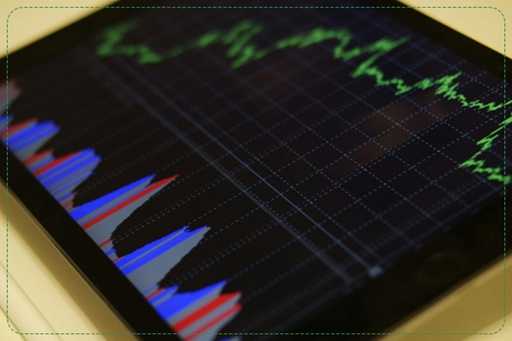Gamifying Forex Trading: Strategies for Success
Understanding the basic concepts is crucial for success in Forex trading. This section covers the essentials, from currency pairs to leverage and market analysis, helping traders build a solid foundation.

Understanding Currency Pairs
Currency pairs are the foundation of forex trading. Each pair consists of a base currency and a quote currency. The base currency is the first listed in the pair, and the quote currency is the second. For example, in the EUR/USD pair, EUR is the base currency, and USD is the quote currency.
When trading currency pairs, traders buy the base currency and sell the quote currency. The pair’s price indicates how much the quote currency is needed to purchase one unit of the base currency. For example, if the EUR/USD pair is priced at 1.20, 1 euro costs 1.20 US dollars.
Pairs are grouped into three categories: major pairs, minor pairs, and exotic pairs. Major pairs include the most traded currencies like EUR/USD and USD/JPY. Minor pairs exclude the US dollar, such as EUR/GBP. Exotic pairs involve lesser-known currencies like USD/TRY.
Leverage and Margin Explained
Leverage allows traders to control large positions with a small initial investment. It’s like borrowing funds to increase potential returns. For example, a leverage ratio of 50:1 means that with $1,000, a trader can control a $50,000 position.
Margin is the amount of money a trader needs to open a leveraged position. It’s a fraction of the trade size. Suppose a broker requires a 2% margin. To open a $100,000 trade, a trader needs $2,000 in their account.
Both leverage and margin amplify gains, but they also magnify losses. Traders must manage these tools carefully. Brokers offer different leverage levels, often varying by region and regulations.
Gamification Techniques in Forex
Gamification in forex trading integrates engaging and interactive elements to enhance trading skills and decision-making. This section outlines key methods like game mechanics, behavioural rewards, and progress tracking that can make learning and practicing forex trading more enjoyable and effective.
Behavioral Rewards Systems
Behavioural reward systems are a vital aspect of gamification. Rewarding for completing tasks or reaching goals can motivate traders to continue improving. These rewards can be virtual, such as points or badges, or real, such as discounts on trading fees or access to premium content.
Instant feedback is crucial. When traders perform an action and receive immediate feedback, they better understand the consequences of their decisions. This can lead to quicker learning and improvement.
Small rewards for consistent trading habits help develop discipline. For example, daily login bonuses or rewards for making a certain number of weekly trades can encourage traders to stay active and engaged. These techniques can reinforce positive behaviours and make trading more consistent and enjoyable.
Challenges and Progress Tracking
Setting up challenges can drive engagement and learning. Examples include weekly or monthly trading contests where traders compete for the highest returns. These contests can help traders develop and test new strategies in a competitive environment.
Progress tracking is essential for measuring improvement. Tools that allow traders to track their performance over time can provide valuable insights. Such tools might include graphs showing profit and loss trends or detailed reports on trading activities.
Clear goals are vital. When traders have defined targets, they can focus on achieving specific outcomes. This can be more motivating than a vague desire to “get better” at trading. Progress tracking tools can help traders see their advancements and identify areas for improvement.
Finding popular Telegram channels for Binance trading tips can supplement these techniques, providing real-world insights and community support to enhance gamified learning experiences.
Developing a Winning Strategy
Developing a winning strategy in Forex trading involves risk management protocols, understanding psychological aspects, and utilizing advanced tools and platforms.
Risk Management Protocols
Effective risk management protocols include setting stop-loss orders, which automatically exit a trade if the market moves against the trader by a certain amount. This helps to prevent losses from growing too large.
Another key element is position sizing. Traders should never risk more than a small percentage of their trading capital on any single trade. This ensures that even if a trade goes badly, the trader will still have enough capital to keep trading.
Finally, diversification can help manage risk. By spreading investments across different currency pairs, traders can reduce their exposure to one particular currency’s fluctuations.
Psychological Aspects of Trading
Psychological factors play a significant role in trading success. Greed and fear are two emotions that can greatly impact trading decisions. For example, traders might be tempted to hold onto losing positions in hopes of a turnaround, leading to even greater losses. Conversely, they might close winning trades too early out of fear of losing profits.
Patience is also a key psychological trait. The Forex market can be volatile, and not every trade will be a win. Accepting this and remaining patient through losses will help traders maintain a level-headed approach, reducing the impact of emotional swings on their trading decisions.
Advanced Tools and Platforms
Utilizing advanced tools and platforms can significantly enhance trading strategies. Modern trading platforms offer a range of features such as real-time market data, automated trading systems, and sophisticated charting tools. These features give traders the information they need to make informed decisions quickly.
Automated trading systems can be beneficial. These systems execute trades based on pre-set criteria, removing the emotional component from trading decisions. They can also monitor the market 24/7, ensuring that opportunities are noticed even when the trader is not actively monitoring the market.
Additionally, advanced charting tools allow for detailed technical analysis. By examining historical price movements and identifying patterns, traders can predict future market behavior. This can be crucial for devising strategies and timing trades effectively.










